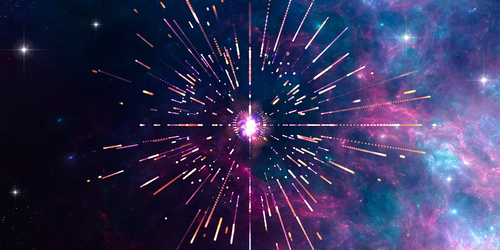A Step Closer to Detecting Ancient Neutrinos
One second after the big bang, so-called cosmic relic neutrino particles scattered out across the Universe. Today, those particles are thought to cluster near galaxies, such as our own Milky Way. When this clustering goes above a certain value, known as the overdensity, researchers predict that the particles should produce a signal detectable on Earth. Though researchers are confident that this signal gets produced, they have yet to capture it in experiments. In a step toward that goal, Thierry Lasserre from the French Alternative Energies and Atomic Energy Commission and colleagues have now updated the constraints on the cosmic relic neutrino overdensity, a result they say should improve the chances of observing the presence of cosmic relic neutrinos [1].
To update the constraint, Lasserre and colleagues analyzed measurements conducted at the Karlsruhe Tritium Neutrino Experiment (KATRIN), Germany. KATRIN consists of a windowless chamber that houses 200𝜇g of gaseous, radioactive tritium and various spectrometers. Relic neutrinos are predicted to interact with tritium, inducing a well-defined electron signal at the edge of the tritium beta-decay spectrum; KATRIN contains the most concentrated source of research tritium in the world.
Beginning in 2019, KATRIN started measuring with high precision the beta-decay spectrum of tritium, and Lasserre and colleagues have now searched that spectrum for a sign of relic neutrino-tritium interactions. While the team have so far found no such signal, they have been able to improve the precision of constraints on the relic neutrino overdensity by a factor of 100. Where previous experiments set the upper bound of this overdensity at ten trillion, Lasserre and colleagues reduce that to a hundred billion.
While Lasserre acknowledges that physicists are still decades away from observing a direct relic neutrino signal, he says that this work represents an important step forward in the search for the holy grail of neutrino physics.
–Allison Gasparini
Allison Gasparini is a freelance science writer based in Santa Cruz, CA.
References
- M. Aker et al. (KATRIN Collaboration), “New constraint on the local relic neutrino background overdensity with the first KATRIN data runs,” Phys. Rev. Lett. 129, 011806 (2022).




